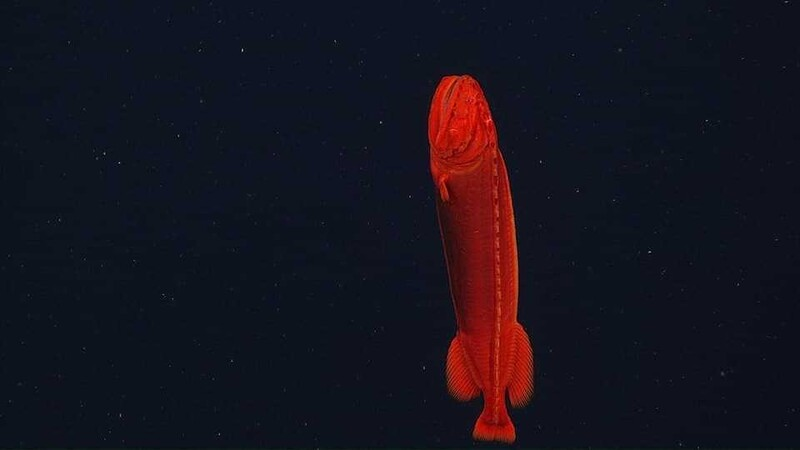
Image
Like so many water-type Pok้mon, we’ve seen everything from dangly anglerfish to ballooning eels to, of course, tons of weird octopi.
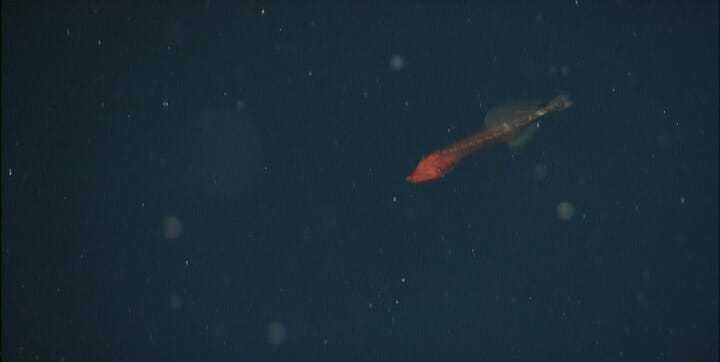
Image
Now, however, an ultra-rare wild whalefish has appeared! And it has no scales, tiny eyes, and is generally haunting.

Image
Live Science picked up on the new glimpse of the whalefish. Which, let us tell you people, is a bizarre creature even for life residing in the “midnight zone” of the ocean.
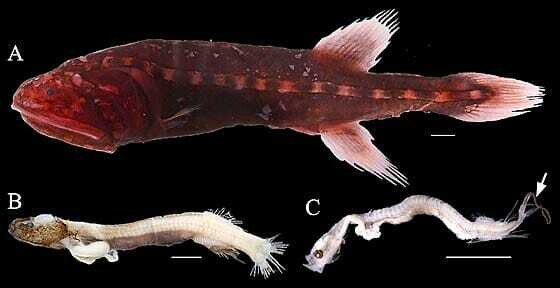
Image
This particular specimen swam past a remotely operated vehicle (ROV) as the submersible explored waters at a depth of 6,600 feet, offshore from Monterey Bay, California.

Image
For the unfamiliar, whalefish, or cetomimiformes, are fish that look like whales. (Surprise!) That’s where the similarities end, though.
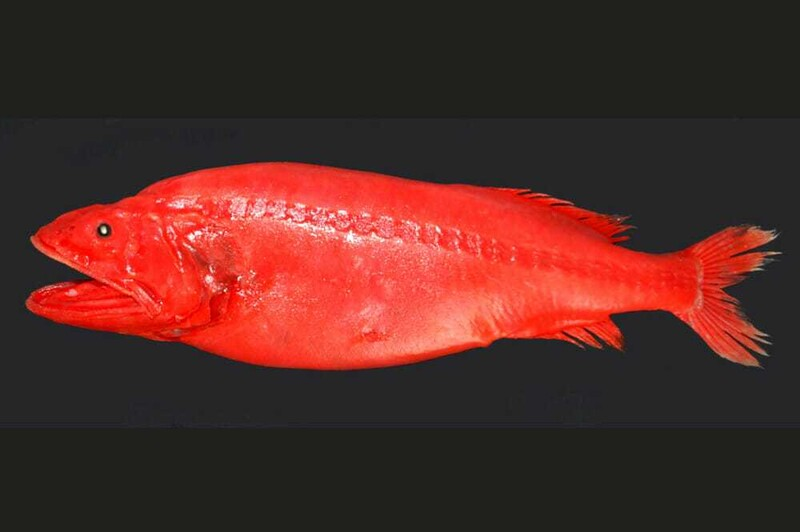
Image
As the whalefish’s odd breeding methods and growth cycles mean that things get real whacky.
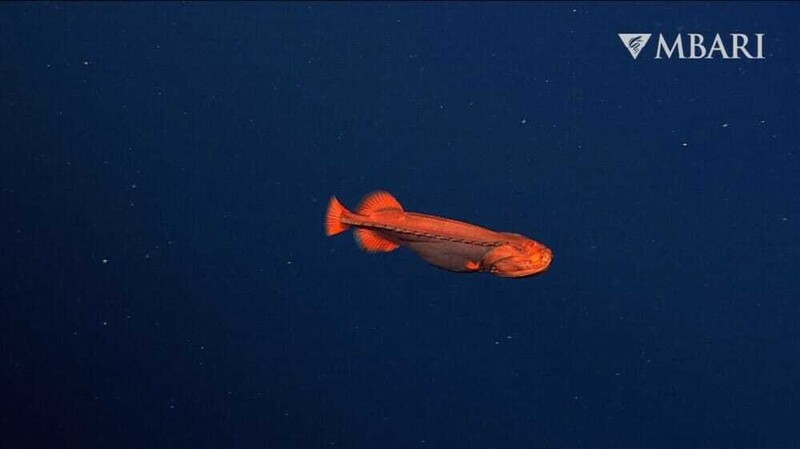
Image
Male whalefish, for example, feed off of their huge livers and use their large nasal organs to sniff for females.
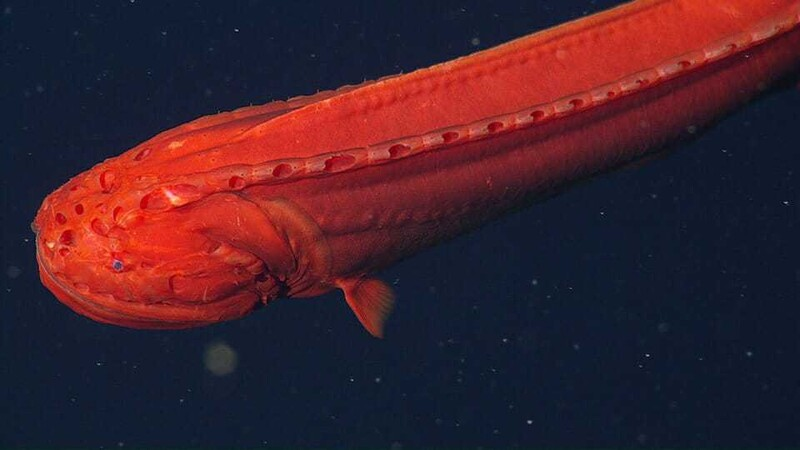
Image
The males also look utterly different from the females due to the order of fish displaying extreme sexual dimorphism.
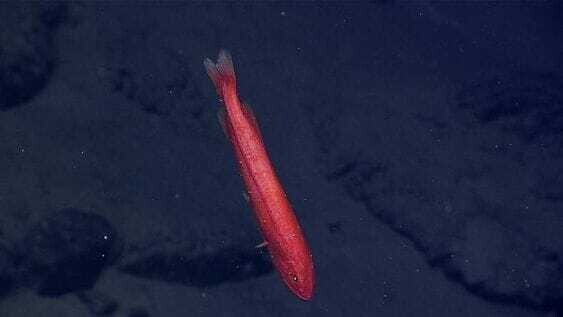
Image
In the video above, Monterey Bay Aquarium Research Institute (MBARI) shows us their glimpse of a female whalefish.
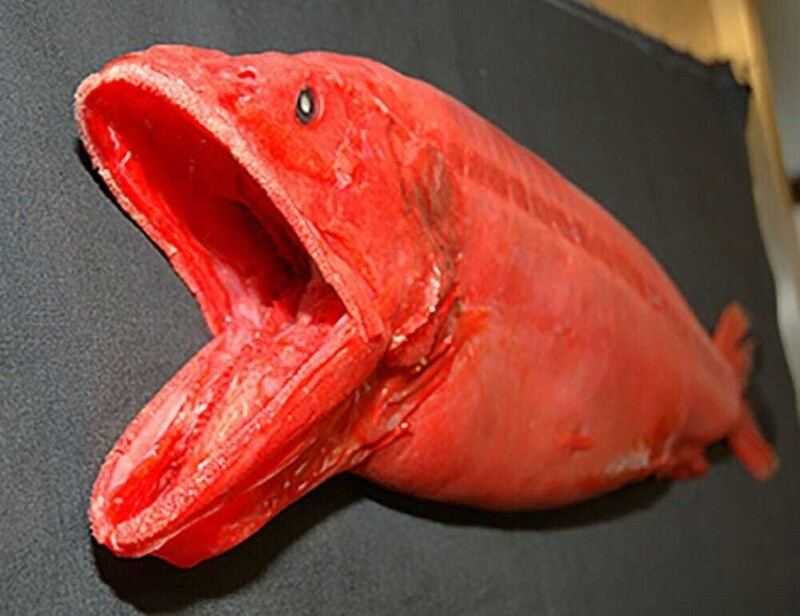
Image
Note that females are much larger than the males—18 inches versus 1.5 inches!—and have a fiery orange color.
The color is intrinsic and not due to the ROV’s lights; that incredible hue happens to help the fish blend in.
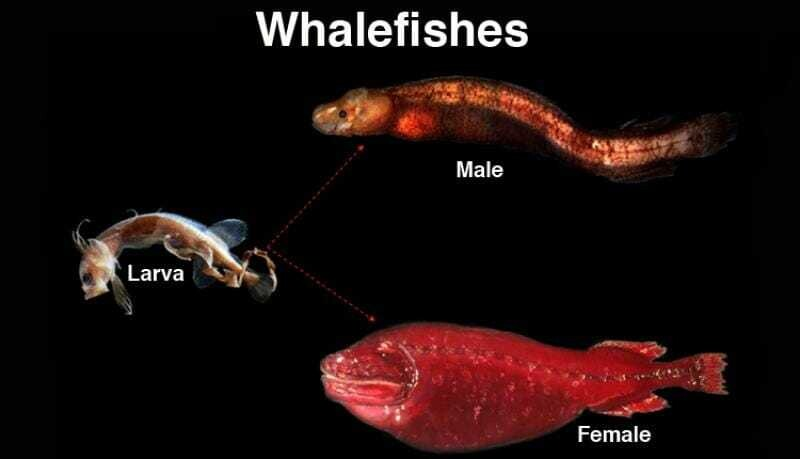
Image
Perhaps the most fascinating part of the female whalefish, however, is how it sees. Or rather, doesn’t see.

Image
As a female whalefish evolves from a larva (or a “tapetail”) into an adult, it loses its eyes’ lenses and the ability to form images.
Consequently, a system of pressure-sensing pores that runs along its head and down the length of its body develops.











